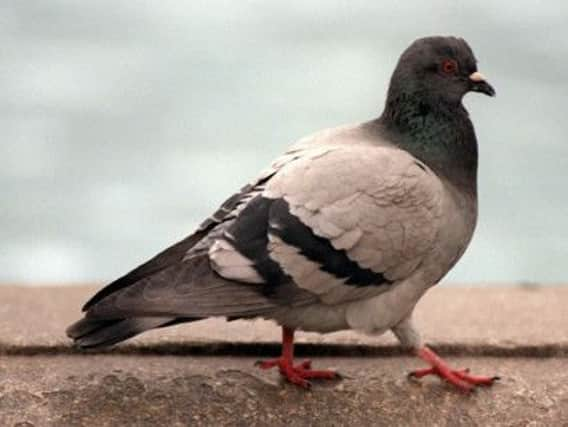Lori Anderson: Respect for animals’ bravery


The plight of animals will always make me blub giant salty tears. If there is one pressure point in my velvety soft heart that can be easily pushed, it is seeing a defenceless animal being ill treated. Whenever the RSPCA runs its festive advertising campaign in which three-legged dogs whimper and limp across the screen, I can usually be found with a box of tissues in one hand and the remote control in the other as I frantically try to change the channel before my heart breaks in two.
This is why, every weekend, when my husband asks again “do you want to watch War Horse, it’s on Netflix?”, I reply: “Will it still contain images of distressed horses tangled in barbed wire and strafed with machine-gun fire? If so, then no I don’t. If, however, you can assure me that it’s been extensively re-edited in the past seven days so that the ‘war’ is now between two chestnut studs for the love of a honey-coloured mare gambolling in a dewy pasture in Dorset, then yes I do.” We’ve still not watched it.
Advertisement
Hide AdAdvertisement
Hide AdThis is my reason for not being among the stampeding Scots who have gone over the top in an attempt to secure tickets for the stage show of War Horse; while my eyes might be able to tell the difference between a real horse and a giant glove puppet, my heart will not. Glove puppets have feelings, too, you know.
Before I started researching this column, my head decided to adopt a “sergeant major” stance on my heart. Like a lily-livered recruit, it was pushed up against the wall and told to toughen up. If I kept weeping over my laptop, how was I supposed to get to the bottom of a simple question: are animals capable of courage? Didn’t I know that salt is corrosive and voids Apple’s warranty?
The question was prompted by the Royal Pigeon Racing Association, which, at its annual conference in Blackpool at the weekend, honoured the 100,000 pigeons that served during the First World War.
The RPRA is holding an exhibition to commemorate the role of these feathery creatures, the photographs and documents, which will be on display for the first time, are culled from the 10,000 locked in its archives, which detail the important role they played during both the First and Second World War.
At first, my attitude was dismissive. Pigeons? Medals for pigeons – actual medals for bravery for a pigeon, a creature with a brain the size of a cue tip, a creature that cannot possibly know the concept of bravery, of putting the life of others before itself, a creature governed only by an ancient animal instinct millions of years old? What nonsense. Yet during the Second World War, Maria Dickin, founder of the People’s Dispensary for Sick Animals, awarded 32 pigeons the Dickin Medal, known as the Animal’s Victoria Cross. The bronze medal had a green, brown and blue ribbon and was engraved with the words “We Also Serve” and “For Gallantry”.
There is a logical and intellectual part of me that believes this to be wrong, that it makes no sense to present an animal with an honour that it cannot understand. I could argue that those who support such meaningless gestures are actually giving the awards to themselves, as a way of publicly celebrating their own nobility and compassion for animals. Immanuel Kant believed that dogs, and other animals, were incapable of making moral judgments that would constitute a courageous act, and I firmly agree.
And then I read about Pigeon 2709 and Cher Ami and my lip began to tremble, my eyes began to water and soon I was in floods of tears.
Picture the scene, it is the autumn of 1917 and British troops are in the middle of the Battle of Passchendaele. Homing pigeons were routinely used to deliver messages at a rate of one mile a minute from the front to headquarters, where their brightly decorated and recognisable lofts were stored.
Advertisement
Hide AdAdvertisement
Hide AdIt was a dangerous journey with Germans shooting them down and launching hawks in pursuit. Pigeon 2709 was sent to deliver a crucial message back to headquarters when he came under enemy fire and was shot in the leg. A 20-minute flight took 21 hours, but still he got the message home before dying the next day.
Cher Ami was even more “heroic” and her message more crucial. She had been donated by British pigeon fanciers and was serving with 200 men from the American 77th who had become trapped behind enemy lines in October 1918 during the Meuse-Argonne offensive.
As no-one knew where they were, the troops were soon being bombarded by their own side. Two messenger pigeons had already been shot down and Cher Ami was their last chance at survival, but she, too, was shot mid-flight. However, she battled on for 25 miles and arrived at headquarters with the message intact but shot in the breast, blind in one eye and with her leg hanging on a tendon.
There was no Dickin Medal in those days, but in recognition of her persistence she was fitted with a wooden leg and lived out her days as a war heroine.
Today, Cher Ami is stuffed and on display at the Smithsonian Institute.
I may not believe animals to be capable of courage as we understand the concept, but that doesn’t stop me from shedding a ridiculous amount of tears for what they suffered during our wars.
What I will do is look at pigeons with new found respect, but I’m still not going to watch War Horse.